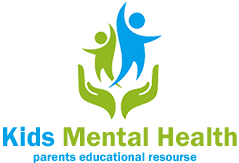Z diagnosis codes serve as vital communication tools between healthcare providers and insurance companies, helping families access the support and services their children need. When you encounter a Z-code on your child’s medical records, understand that these codes don’t represent illnesses or conditions – instead, they describe circumstances that influence health status or contact with health services. Whether it’s identifying social factors affecting health, tracking preventive care, or documenting specific health concerns, Z-codes help create a more complete picture of your child’s healthcare journey. For parents navigating the healthcare system, these codes play an essential role in ensuring proper documentation, appropriate coverage, and comprehensive care coordination. By understanding Z-codes, you can better advocate for your child’s healthcare needs and work more effectively with medical professionals to achieve the best possible outcomes.

Understanding Your Child’s Z-Code Diagnosis
Common Z-Codes in Children’s Mental Health
Z-codes commonly used in children’s mental health help healthcare providers document important life circumstances that may affect a child’s well-being. These codes don’t represent mental health conditions themselves but rather highlight situations that deserve attention and support.
One frequently used code is Z63.8, which indicates family relationship problems. This might be used when a child is struggling with sibling rivalry or adjusting to a new family dynamic. Z62.820 describes parent-child relationship challenges, often noted when there are communication difficulties or emotional distance between parent and child.
Educational concerns are captured by Z55.3 (underachievement in school) and Z55.9 (academic problems). These codes help track when a child might need additional educational support or assessment. For children experiencing bullying or peer conflicts, Z62.811 is often used to ensure these social challenges are properly documented and addressed.
Z63.5 indicates family disruption, which might be used when parents are separating or during major family transitions. For children adjusting to a new home or school, Z60.3 (acculturation difficulty) helps document these important life changes.
Remember that these codes are tools to help healthcare providers better understand your child’s situation and coordinate appropriate support services. They’re not labels or judgments, but rather stepping stones toward getting your child the help they need.
How Z-Codes Differ from Other Mental Health Diagnoses
Unlike traditional mental health diagnoses, Z-codes serve a different purpose in healthcare documentation. While diagnoses like anxiety or depression describe specific mental health conditions, Z-codes highlight life circumstances or social factors that may affect a person’s well-being. Think of them as describing the “why” behind someone seeking help, rather than a specific condition.
For example, if a child is struggling with academic performance, their healthcare provider might use a Z-code to document that they’re experiencing stress related to schoolwork. This doesn’t mean the child has a mental health condition – rather, it acknowledges that they’re facing a challenging life situation that deserves attention and support.
Z-codes are particularly valuable because they help healthcare providers address the whole picture of a person’s life, not just their symptoms. They recognize that sometimes we need help navigating life’s challenges even when we don’t have a diagnosable condition. This approach helps reduce stigma and ensures that people can receive appropriate support for various life situations that impact their mental well-being.
For parents and educators, understanding this distinction can be reassuring – it means getting help for life’s challenges is a normal and healthy choice.
Next Steps After Receiving a Z-Code Diagnosis
Working with Healthcare Providers
Working with healthcare providers is a collaborative journey that benefits your child’s mental health care. When discussing Z-codes with mental health professionals, it’s helpful to come prepared with specific observations about your child’s behaviors, challenges, and any changes you’ve noticed. Be open and honest about your concerns, and don’t hesitate to ask questions about different treatment options available.
Keep a detailed record of your child’s symptoms, behaviors, and any life changes that might be affecting them. This information helps providers make more accurate assessments and develop effective care plans. Remember that you’re an essential part of your child’s care team – your insights and daily observations are invaluable to healthcare providers.
Consider bringing a notebook to appointments to write down important information, recommendations, and next steps. If something isn’t clear, ask for clarification. Many parents find it helpful to maintain regular communication with their child’s healthcare team through approved channels, ensuring everyone stays updated on progress and any new concerns that arise.
School and Educational Support
When your child receives a Z-code diagnosis, it opens doors to various educational support services and accommodations within the school system. Schools are required to work with families to ensure students have equal access to education, and Z-codes can help document the need for these services.
Start by scheduling a meeting with your child’s teachers and school counselor to discuss the diagnosis and develop an appropriate support plan. This might include creating a 504 plan or exploring special education services through an Individualized Education Program (IEP). These formal documents outline specific accommodations, such as extended test time, quiet spaces for work, or modified assignments.
Many schools offer additional resources like counseling services, study skills support, or social skills groups that can benefit students with Z-code diagnoses. Regular communication between parents, teachers, and healthcare providers helps ensure these supports are effective and adjusted as needed.
Remember that you are your child’s best advocate. Keep detailed records of meetings, correspondence, and any challenges or progress your child experiences. This documentation can be valuable when reviewing and updating educational support plans throughout the school year.

Supporting Your Child at Home

Communication Strategies
When discussing a Z diagnosis with your child, choose a quiet, comfortable setting where they feel safe and supported. Start with simple, age-appropriate language and focus on their strengths while acknowledging their challenges. For example, you might say, “Everyone’s brain works differently, and sometimes you might need extra help with certain things – that’s completely okay.”
Listen actively to your child’s concerns and validate their feelings. Avoid using labels or negative terms that might make them feel different or stigmatized. Instead, emphasize that getting help is a positive step toward feeling better and learning new skills.
Consider using stories or examples they can relate to, like comparing their situation to a favorite book character who overcame challenges. Remind them that many children face similar situations and that having support is normal and helpful. Keep communication channels open by regularly checking in with them about their feelings and experiences.
Always end conversations on a positive note, highlighting their progress and the support system available to them.
Building a Support System
Building a strong support network is crucial when navigating your child’s diagnosis and treatment journey. Start by connecting with your child’s primary care physician, who can help coordinate care and refer you to appropriate specialists. Consider joining local parent support groups where you can share experiences and learn from others facing similar challenges.
School counselors and teachers are valuable allies in creating a supportive educational environment. Work closely with them to develop strategies that help your child succeed in the classroom. Don’t forget to involve extended family members who can provide emotional support and practical help when needed.
Many communities offer resources like family therapists and child development specialists who can guide both parents and children. Online support communities can also provide 24/7 encouragement and advice, though it’s important to verify information with healthcare professionals.
Remember, taking care of yourself is essential too. Consider connecting with parent counseling services or finding a trusted friend who can be your listening ear during challenging times.
Understanding Z diagnosis codes is an important step in supporting your child’s mental health journey. Remember that these codes are tools to help healthcare providers better understand and address your child’s specific needs – they’re not labels that define your child’s future or potential.
As you navigate this process, know that you’re not alone. Many parents have successfully worked with healthcare providers using Z codes to create positive outcomes for their children. Focus on the opportunities these codes provide: better communication with healthcare teams, access to appropriate services, and a clearer path forward for support.
Take it one step at a time, stay engaged with your child’s healthcare providers, and don’t hesitate to ask questions. Your active involvement makes a significant difference in your child’s progress. With understanding, patience, and the right support system, you can help your child thrive, regardless of the challenges they may face.







